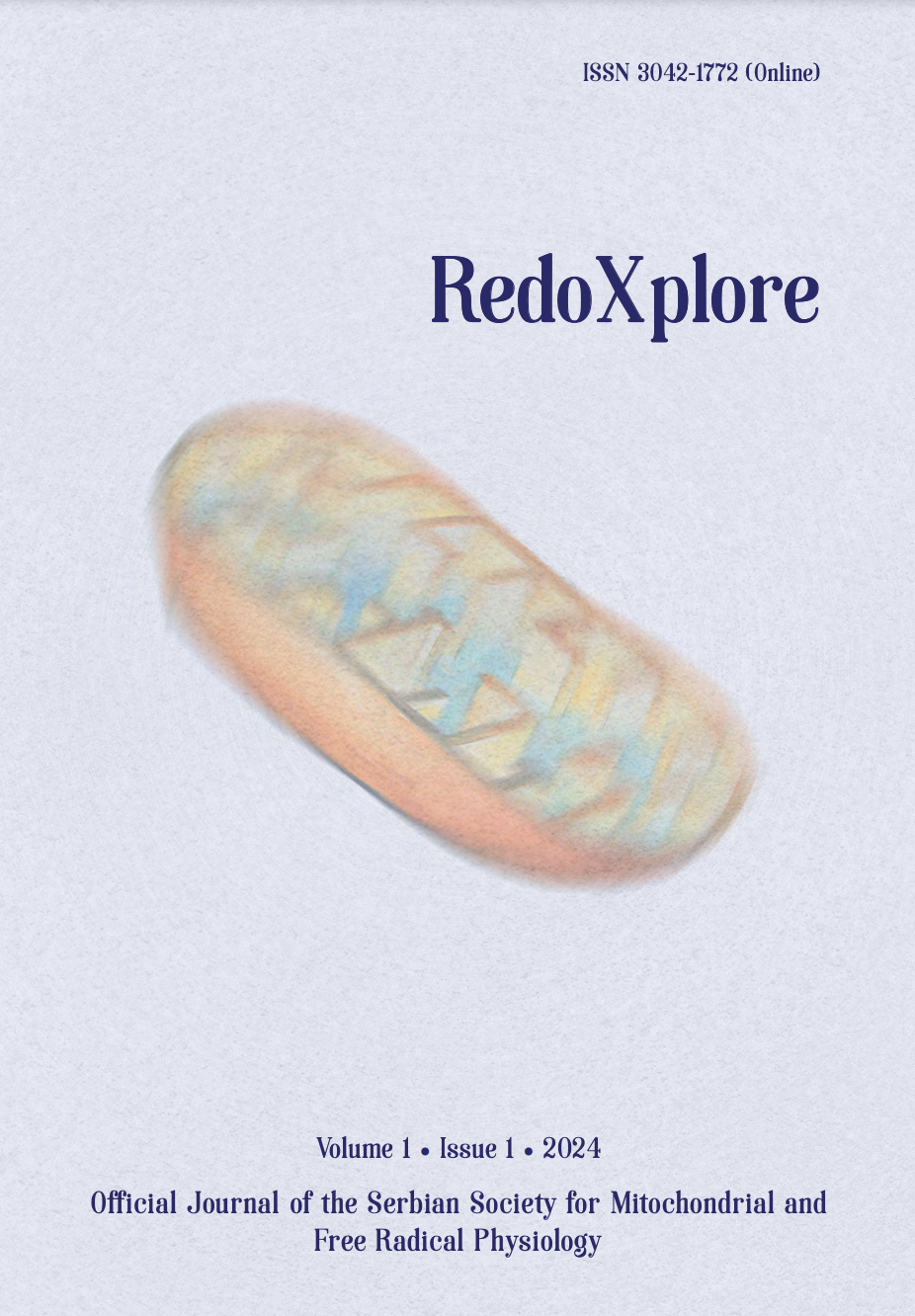
More articles from Volume 1, Issue 1, 2024
REDOX AND METABOLIC REPROGRAMMING OF BREAST CANCER CELLS AND ASSOCIATED ADIPOSE TISSUE - THE CORNERSTONES OF ADAPTIVE TUMOUR BEHAVIOUR
INSULIN MODULATES MITOCHONDRIAL STRUCTURAL AND FUNCTIONAL MOSAICISM IN BROWN ADIPOCYTES
NITRITE MITIGATES OXIDATIVE BURST IN ISCHEMIA/REPERFUSION IN BRAIN SLICES
NITRIC OXIDE, SUPEROXIDE AND PEROXYNITRITE – REDOX REGULATION OF THE CARDIOVASCULAR SYSTEM BY NITRO-OXIDATIVE STRESS AND S-NITROS(YL)ATION
DIETARY NITRATE AS PIVOT ON THE GUT MICROBIOTA-HOST REDOX COMMUNICATION
IMPACT OF SULFUR AMINO ACIDS SUPPLEMENTATION ON PERFORMANCE, OXIDATIVE STRESS, AND LIVER HISTOLOGY IN FEED-RESTRICTED INSHAS COCKERELS
Animal and Poultry Production Department, Faculty of Agriculture, Minia University , Minya , Egypt
Agricultural Chemistry Department, Faculty of Agriculture, Minia University , Minya , Egypt
Animal and Poultry Production Department, Faculty of Agriculture, Minia University , Minya , Egypt
Institute for Information Technologies, University of Kragujevac , Kragujevac , Serbia
Department of Pharmacology and Toxicology, College of Pharmacy, King Saud University , Riyadh , Saudi Arabia
Department of Pharmacology and Toxicology, College of Pharmacy, King Saud University , Riyadh , Saudi Arabia
Department of Poultry Production, Faculty of Agriculture, Fayoum University , Al Fayyum , Egypt
Editor: Bato Korac
Published: 29.08.2024.
Short oral presentations
Volume 1, Issue 1 (2024)
Abstract
A 60-day experiment was conducted to investigate the impact of dietary sulfur amino acids (AA) on altered haemato-biochemical and redox parameters of Inshas cockerel chicks raised under restricted feeding. Male Inshas strain chickens were divided into five groups, each with five replicates of eight birds. The control group received the full National Research Council (NRC) requirements (100%). The other groups received diets meeting 90% of NRC requirements: 90% NRC; 90% NRC+Methionine; 90% NRC+Cysteine; and 90% NRC+both Methionine and Cysteine (AA-mix). AA supplementation improved growth performance compared to the control group. The birds that were given a combination of AA supplementation exhibited the highest body weight and carcass weight compared to other groups. AA supplementation improves blood physiological characteristics by reducing damage caused by feed restriction conditions. Serum parameters, including aspartate aminotransferase, alanine aminotransferase, lactate dehydrogenase, alkaline phosphatase, gamma-glutamyl transpeptidase, and total protein concentration, showed decreased levels. Treatment with mixed AA maintained urea and uric acid concentrations at a level similar to the control group. Remarkably, a combination of AA treatments reduced the negative effects of feed restriction on young male chickens by enhancing the overall antioxidant capacity and activity of antioxidant enzymes in liver tissue (glutathione S-transferase, total superoxide dismutase, glutathione peroxidase, and amount of total glutathione), and decreased the malondialdehyde concentration. Feed restriction impacted liver histological structure, where hepatocytes were susceptible to feed restriction and included numerous cytoplasmic vacuoles, congested blood vesicles, lymphocytic infiltration, and pyknotic nuclei in treated cockerels. AA therapy restored most hepatic histological abnormalities. The findings suggest that AA supplementation significantly mitigated the adverse effects of feed restriction by improving haemato-biochemical parameters and hepatic redox status.
Acknowledgement: The authors extend their appreciation to the Department of Animal and Poultry Production, Faculty of Agriculture, Minia University, Egypt.
Citation
Copyright

This work is licensed under a Creative Commons Attribution-NonCommercial-ShareAlike 4.0 International License.
Article metrics
The statements, opinions and data contained in the journal are solely those of the individual authors and contributors and not of the publisher and the editor(s). We stay neutral with regard to jurisdictional claims in published maps and institutional affiliations.






